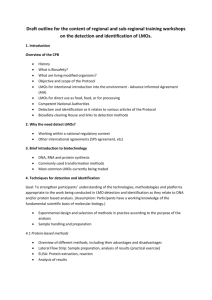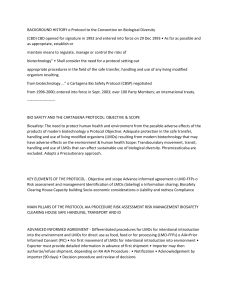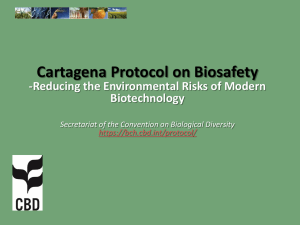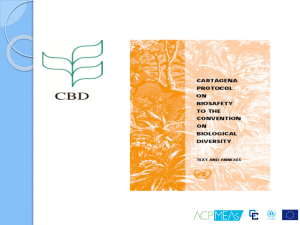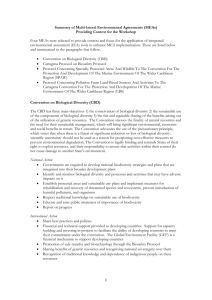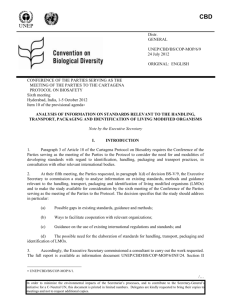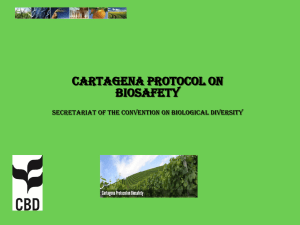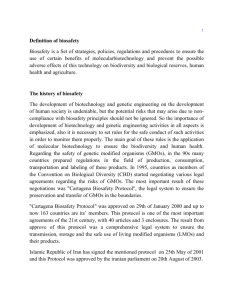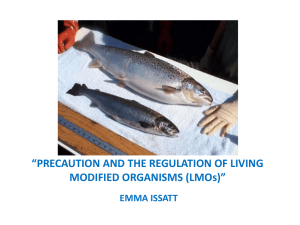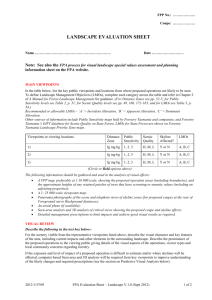Draft outline for the content of training material on the detection and
advertisement
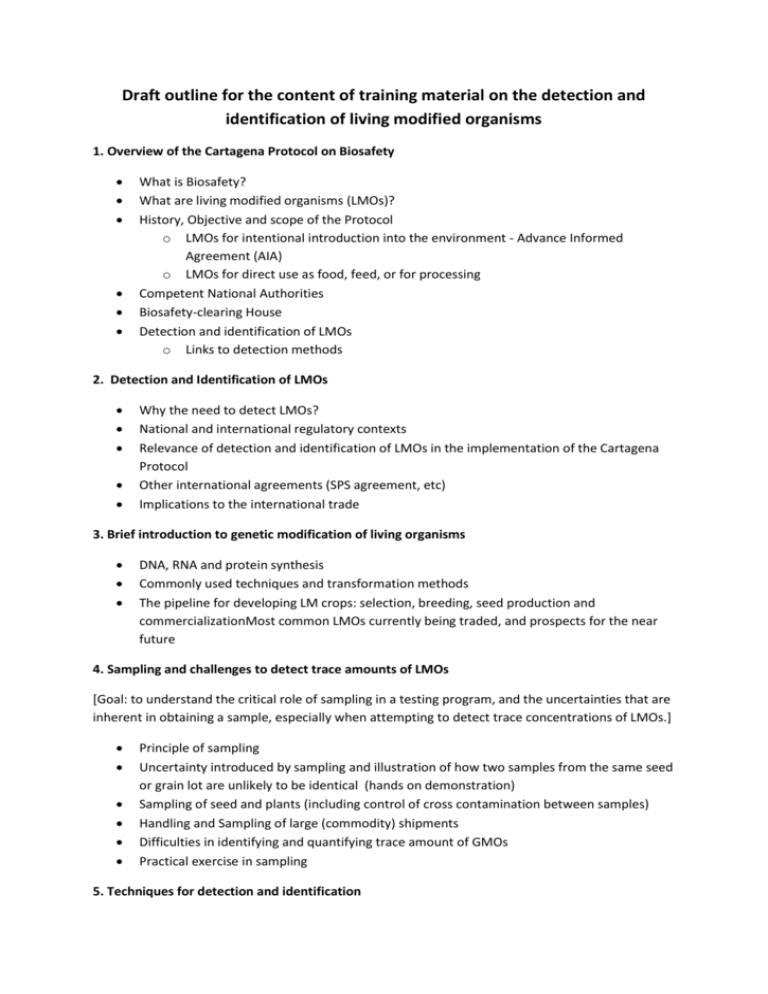
Draft outline for the content of training material on the detection and identification of living modified organisms 1. Overview of the Cartagena Protocol on Biosafety What is Biosafety? What are living modified organisms (LMOs)? History, Objective and scope of the Protocol o LMOs for intentional introduction into the environment - Advance Informed Agreement (AIA) o LMOs for direct use as food, feed, or for processing Competent National Authorities Biosafety-clearing House Detection and identification of LMOs o Links to detection methods 2. Detection and Identification of LMOs Why the need to detect LMOs? National and international regulatory contexts Relevance of detection and identification of LMOs in the implementation of the Cartagena Protocol Other international agreements (SPS agreement, etc) Implications to the international trade 3. Brief introduction to genetic modification of living organisms DNA, RNA and protein synthesis Commonly used techniques and transformation methods The pipeline for developing LM crops: selection, breeding, seed production and commercializationMost common LMOs currently being traded, and prospects for the near future 4. Sampling and challenges to detect trace amounts of LMOs [Goal: to understand the critical role of sampling in a testing program, and the uncertainties that are inherent in obtaining a sample, especially when attempting to detect trace concentrations of LMOs.] Principle of sampling Uncertainty introduced by sampling and illustration of how two samples from the same seed or grain lot are unlikely to be identical (hands on demonstration) Sampling of seed and plants (including control of cross contamination between samples) Handling and Sampling of large (commodity) shipments Difficulties in identifying and quantifying trace amount of GMOs Practical exercise in sampling 5. Techniques for detection and identification [Goal: To strengthen participants’ understanding of the technologies, methodologies and platforms appropriate to the work being conducted in LMO detection and identification as they relate to DNA and/or protein based analysis. (Assumption: Participants have a working knowledge of the fundamental scientific basis of molecular biology.)] 5.1 Choice of methods Experimental design and selection of methods based on the purpose of the analysis and nature of the goods under investigation Sample handling and preparation Applicability of matrices 5.2 Protein-based methods Overview of different methods, including their advantages and disadvantages o Lateral Flow Strip: Theory; Sample preparation; practical exercise; analysis of results o ELISA: Theory; Sample preparation; analysis of results Limitations of protein-based methods (e.g. cross-reacting antibodies, lack of specific antibodies, sensitivity, availability of commercial kits, etc) 5.3 DNA-based methods DNA extraction/isolation and handling procedures (analysis of DNA samples quality) o Qualitative PCR methods (end-point PCR and gel electrophoresis; real-time PCR) o Quantitative PCR methods (real-time PCR for relative and absolute quantification) PCR-based screening strategies (matrix approach) Interpretation of results (LOD, LOQ, statistics, etc) Limitations of DNA-based methods (e.g. lack of DNA sequence information, lack of reference material, etc). 5.4 Other novel technologies/strategies for LMO Detection Novel approaches for simultaneous detection of multiple LMOs Sequencing strategies, LAMP, etc. Detection of RNA species 6. Introduction to the quality assurance/quality control standards [Goal: To ensure participants are aware of best practices for QA/QC as they apply to LMO detection and identification and have an understanding of certification/ accreditation procedures so that they can design appropriate laboratory workspaces and documentation procedures.] Lab set-up requirements and lab environment Equipment calibration and maintenance Minimal standard criteria and requirements for experimental quality assurance ((e.g. negative, positive controls, reference materials, replicates, etc.) Method Validation Proficiency tests Non-conformances and Corrective Actions Access to information and certified reference materials Documentation requirements Laboratory documentation policy (paper and/or electronic) Overview of relevant accreditations and International standards o ISO Standards(e.g. ISO17025) o Codex Standards and guidelines (Methods and LLP) o Role of Standards Developing Agencies o ISTA guidelines 7. Reporting Goal: To provide instruction to participants on reporting analytical results or issuing written notifications according to the laboratory's policy, and in compliance with national and international regulations and practices Laboratory policy on sample file content Report writing, sections and contents Technical and Administrative Review Report issuance according to laboratory policy Compliance with national and international standards on reporting Confidentiality/disclosure of information
